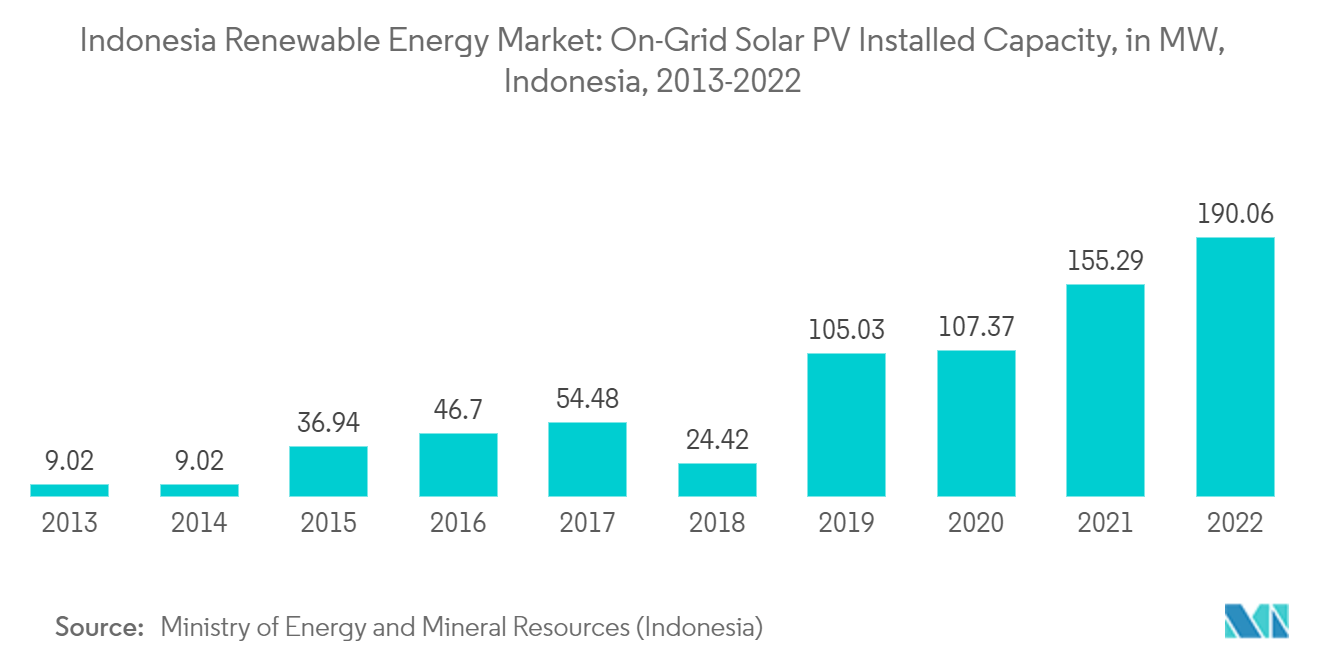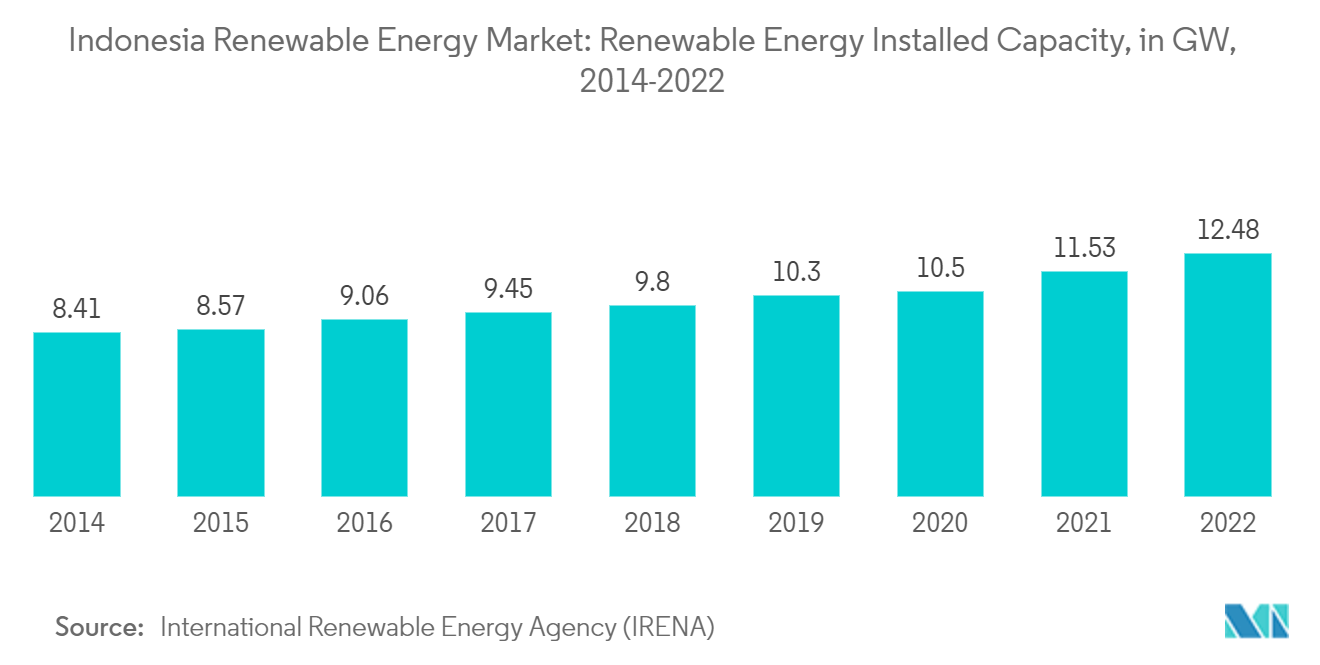Market Trends of Indonesia Renewable Energy Industry
Solar Energy Is Expected to Witness Significant Growth
- The Indonesian government set a renewable energy target of 23% and 31% of the total electricity generation by 2025 and 2050, respectively. Around 13% of power generation nationwide comes from renewable energy resources, mainly hydroelectric and geothermal power production.
- Indonesia is rich in solar power, with a potential of around 207 GW, according to the Ministry of Energy and Mineral Resources (MEMR). The Indonesian government is prioritizing the development of renewable energy sources, including solar.
- According to the Ministry of Energy and Mineral Resources, in 2022, the total installed on-grid solar photovoltaic (PV) capacity was approximately 190.06 MW, representing an increase of 22.39% compared to 155.29 MW in 2021. The International Renewable Energy Agency (IRENA) states that Indonesia is installing solar power capacity to grow significantly in scale by 2030, mainly driven by initiatives by the government and PLN (a state-owned electricity company).
- The IRENA identified the potential for Indonesia to deploy 47 GW of solar power capacity by 2030 as part of its 2017 Roadmap for a Renewable Energy Future (REmap) program report.
- The Indonesian solar power capacity is growing at the utility scale, on residential and commercial rooftops, and in off-grid settings to replace costly diesel-fueled generation, which is expected to drive solar power generation in the country.
- In September 2021, the Ministry of Energy and Mineral Resources (MEMR) enacted the net metering legislation for rooftop PV, increasing the net metering factor from approximately 0.65 to 100. Thus, solar PV system owners will likely be given surplus credits for the power they inject into the grid, the same tariff rate for buying electricity from the network. Such government initiatives will likely increase the demand for solar energy in Indonesia during the forecast period.
- Therefore, due to such factors, the solar energy segment is expected to grow significantly during the forecast period.

Progressing Renewable Energy Policies Are Expected to Drive the Market
- After decades, the Indonesian New and Renewable Energy (NRE) has gained momentum in recent years. Indonesia lags in developing its new and renewable energy resources compared to other countries. The country's rich oil and gas resources in the past have made NRE development a choice instead of a priority.
- The government of Indonesia started paying attention to the NRE sector when Indonesian oil and gas reserves started depleting. The country became a net oil importer for the first time in 2005.
- Consequently, the Energy Law of 2007 set Indonesia's plan to shift its reliance on fossil fuels, mainly coal, and oil, toward more eco-friendly and sustainable means like solar, wind, hydro, geothermal, and biomass.
- The Ministry of Energy and Mineral Resources data show that the country has enormous potential for geothermal energy at 23.9 GW and more than 94 GW of hydropower. The country also has a biomass potential of more than 32.6 GW and a biogas potential of 200,000 barrels per day.
- Renewable energy projects are estimated at 60.6 GW for wind energy, 208 GW for solar energy, and 17.9 GW for ocean and tidal energy. The potential could be substantially more immense with rapidly advancing renewable energy technology.
- According to the Internation Renewable Energy Agency, in 2022, the total installed renewable energy capacity was approximately 12.48 GW, representing an increase of 8.18% compared to 11.53 GW in 2021.
- Therefore, due to such factors, increasing policies set by the government are expected to drive the country's renewable energy market during the forecast period.


